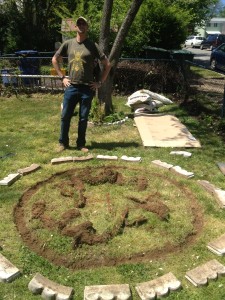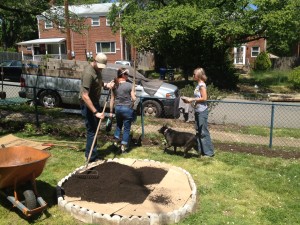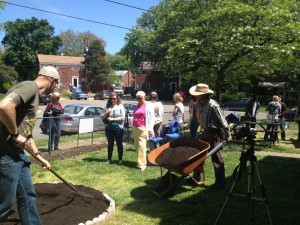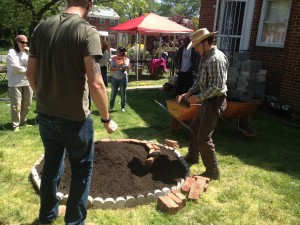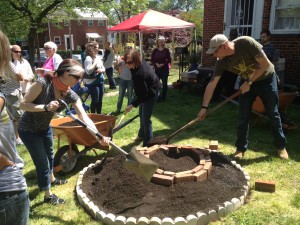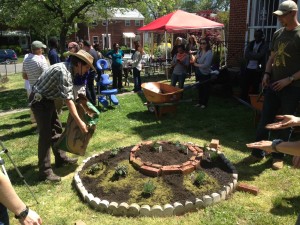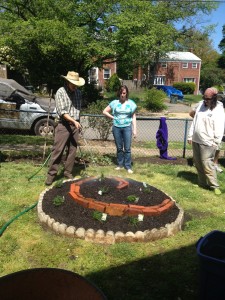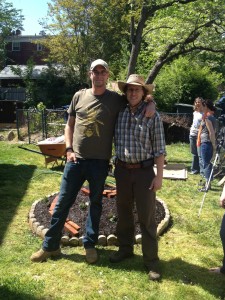On May 5, in celebration of International Permaculture Day, we participated in an organic gardening & raw food demonstration at a local resident’s home. Our contribution was an herb spiral demonstration.
An herb spiral is a well known permaculture technique for growing herbs in a very small space. Essentially what this does is take about 30 linear feet of growing space, and condenses it into a mound approximately 6 feet in diameter and 2-3 feet high. This allows for easy access to the plants from all sides without having to reach more than 3 feet from any side.
It also allows for the creation of microclimates – creating small spaces with slightly different growing conditions that are ideal for different plants. Plants that require more sun are placed on the top and south-facing aspects of the mound, while plants that like a little less sun are placed on the north side. Since the mound is watered from the top, and the water will run down the mound, plants that prefer less water are placed near the top of the spiral while those that like a little more water are placed near the bottom where they receive more water.
Herb spirals can be as simple or as complex as your desire warrants – they can be anything from a mound of soil with stones or bricks outlining the spiral, to spiral-shaped dry-stack stone walls filled with soil. Our purpose in building this particular herb spiral was to illustrate what anyone can do with a minimum of materials and effort – in this case we used bricks, pavers, and mulch that the resident already had onsite, the only outside inputs were about a cubic yard of topsoil, the plants, and some alfalfa meal for an organic fertilizer.
First, we marked the circular outline of the herb spiral bed, and dug out a small trench to sink in the landscape pavers for a border.
We then covered the interior of the circle with cardboard to act as a grass and weed barrier – the cardboard will smother the existing grass and prevent it from growing up into the herb spiral. Over a few months, the cardboard will decompose and add organic matter to the soil.
Next, we filled the interior of the circle with topsoil to create the spiral mound.
Once the mound was shaped, we used found bricks from the site to shape the spiral.
From there it was a simple matter of putting in the plants – in this case, rosemary, thyme, oregano, sage, lavender and chives – and adding a bit of alfalfa meal as a slow-decomposing organic fertilizer.
Add mulch and water the plants, and voila – you have an herb spiral. The whole process took about 30 minutes from start to finish.
It was a great opportunity to show people how simple, inexpensive, and effective permaculture techniques can be. We had a lot of fun and look forward to giving more demonstrations in the future!

